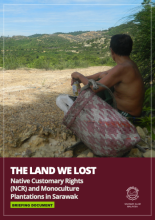/ library resources
Showing items 1 through 9 of 261.With 15–20% of Indonesian oil palms located, without a legal basis and permits, within the forest zone (‘Kawasan hutan’), international concerns regarding deforestation affect the totality of Indonesian palm oil export.
Processes of globalization have generated new opportunities for smallholders to participate in profitable global agro-commodity markets. This participation however is increasingly being shaped by differentiated capabilities to comply with emerging public and private quality and safety standards.
Mobilising under-utilised low carbon (ULC) land for future agricultural expansion helps minimising further carbon stock loss.
Oil palm plantations in Indonesia have been linked to substantial deforestation in the 1990s and 2000s, though recent studies suggest that new plantations are increasingly developed on non-forest land.
In recent history, Indonesian forest policies have been dominated by deforestation in the name of economic progress. Many actors have expressed concerns about this trend and have tried to reverse it in favour of a more sustainable pathway.
Energy crop expansion can increase land demand and generate displacement of food crops, which impacts greenhouse gas (GHG) emissions mainly through land-use change (LUC). Increased agricultural productivity could compensate for this.
The production of commodities such as palm oil and pulpwood is leading to large-scale land use change in the rural tropics to fulfil the demands of the increasing world population and overall living standard.
This publication is the outcome of our research on the socio-environmental impacts of large pulp and paper, timber tree and oil palm plantations in Sarawak. It contains two case studies on plantation affected indigenous communities in Batu Niah and Bakong in the Miri Division.
This publication is the outcome of our research on the socio-environmental impacts of large pulp and paper, timber tree and oil palm plantations in Sarawak. It contains two case studies on plantation affected indigenous communities in Batu Niah and Bakong in the Miri Division.
Pagination
Land Library Search
Through our robust search engine, you can search for any item of the over 73,000 highly curated resources in the Land Library.
If you would like to find an overview of what is possible, feel free to peruse the Search Guide.



